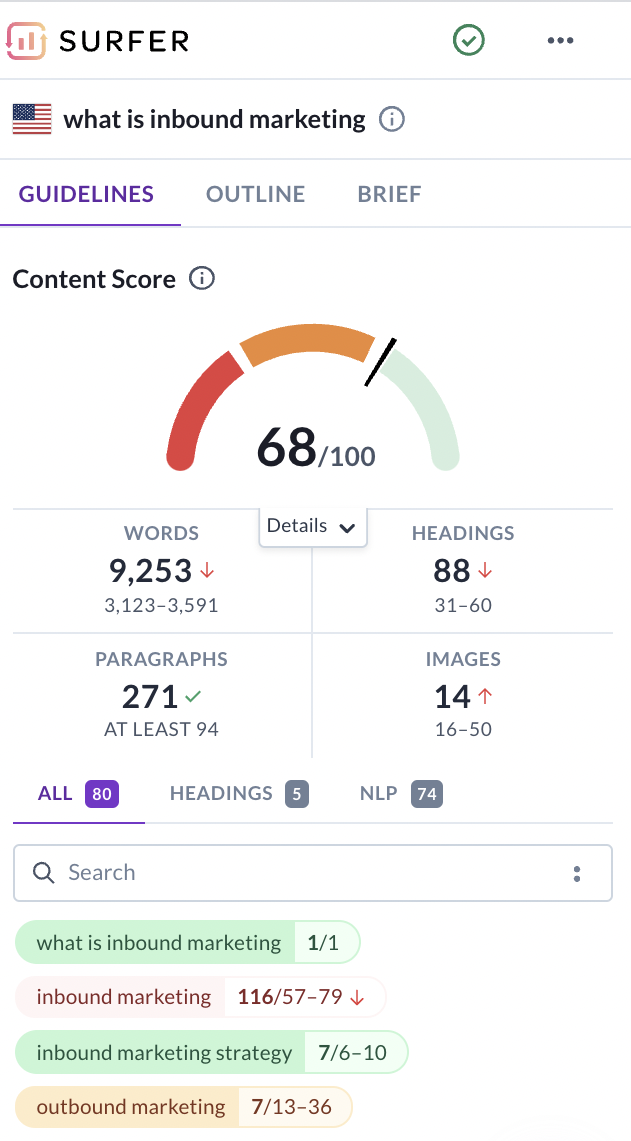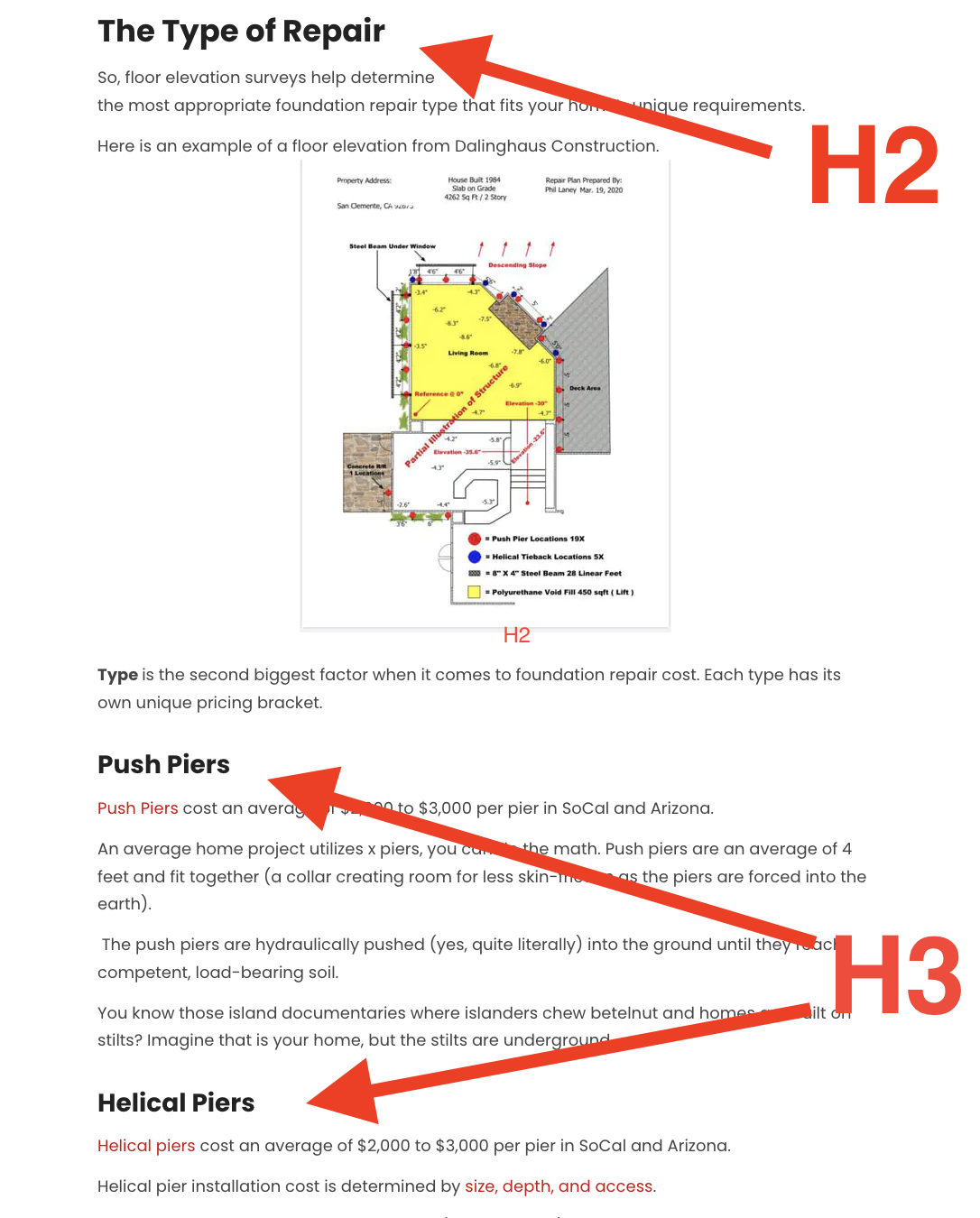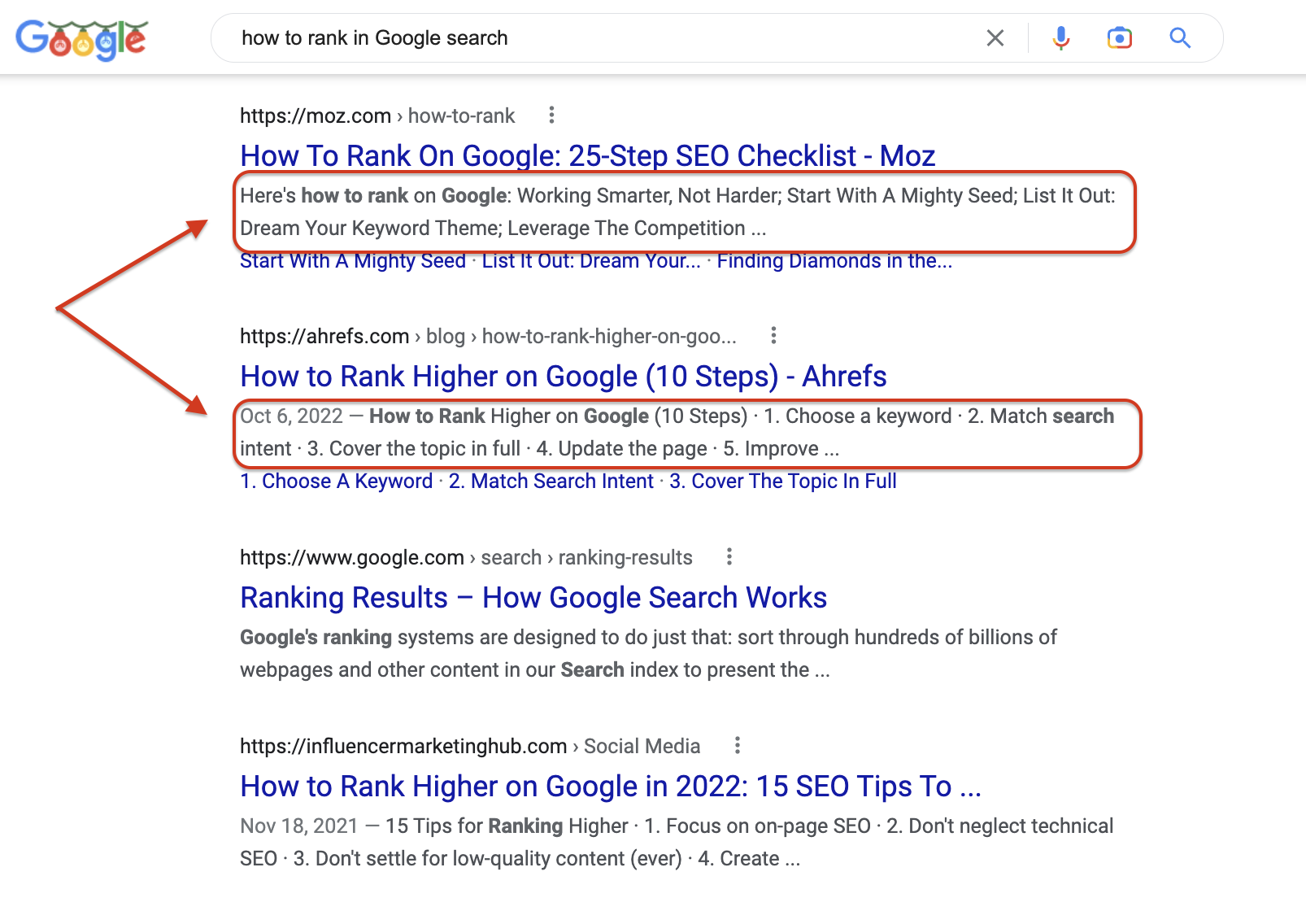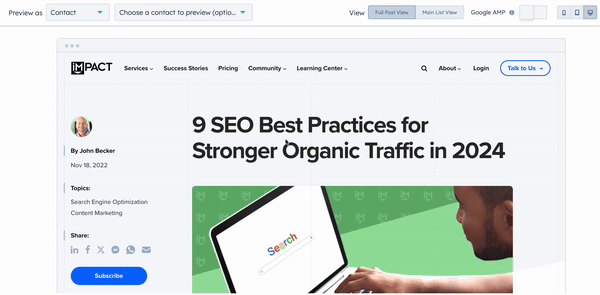Never Miss an Update From The Endless Customers Podcast
Each week have the latest episode delivered directly to your inbox with the latest insights, tactics, and success stories.
9 SEO Best Practices for 2026
Last updated on November 24, 2025

At a Glance
What are SEO best practices?
Even in the age of AI, traditional SEO fundamentals still drive visibility and trust.
-
Focus on customer keywords
-
Use effective titles and headings
-
Write strong meta descriptions
-
Optimize images
-
Add useful internal links
-
Ensure user-friendly design
-
Improve page speed
-
Use navigation and sitemaps
-
Lean into semantic HTML.
If you’ve been paying attention to the world of search engine optimization (SEO) recently, you know it is hardly business as usual. 
AI has completely disrupted traditional search. Between Google’s AI-powered results, ChatGPT, and a growing list of AI assistants, buyers can now get rich, conversational answers without ever clicking through to a website. For a lot of businesses, that feels like the ground is shifting under their feet.
Here is the interesting part though. Again and again, we are seeing the same pattern:
The pages that rank well on Google are usually the same pages AI Overviews and AI assistants pull from and recommend.
In other words, AI may have changed how answers are presented, but it still leans on the same core signals: clear topics, strong on-page structure, trustworthy brands, and content that actually helps the buyer.
If your content is well optimized for traditional search, you are already giving yourself a better chance to be cited and recommended by AI.
So even though AI has changed the game, you still need to be up to date on SEO best practices for your content marketing strategy.
That is what this list is about.
And, while we understand how important it is to drive website traffic to your website, we also believe it’s important to focus on the right traffic. So, you'll see that our SEO best practices are a little different than the garden variety ones you can find anywhere else on the internet.
These are the tactics we've taught to hundreds of businesses that have helped our clients generate millions in revenue.
Here’s what to know.
Is All Website Traffic Good for Business?
As we dive into SEO, remember that traffic itself is not a goal, and getting more traffic is not a strategy.
If you attract traffic that has no intent to buy, it might make you feel good, but it won't impact your company's bottom line.
You don’t want just any web traffic coming to your website; you want to drive the right traffic
This means qualified leads who are looking to buy and are looking for the products and services you provide. Creating content that addresses their needs should be a key part of your SEO strategy.
We teach our clients to drive more qualified leads using the Endless Customers System™, which teaches you not to lose sight of one simple thing: What are the questions and concerns your customers have before they buy?
We've seen that there are five questions on every customer's mind, no matter what they're buying. When you make answering these questions a part of your SEO strategy, you're always going to be heading in the right direction.
Whatever you sell, your buyer wants to know:
- How much they're going to pay — and what factors make that number go up or down
- Potential problems or drawbacks of a given product
- How two options compare to each other
- Reviews from experts and past customers
- What are their best-in-class options
We call these The Big 5.
We’ve seen it time and time again: When businesses take the time to answer these questions honestly and thoroughly, their search engine rankings improve and they see organic traffic increase steadily month over month.
Even Google has said that their automated ranking systems, "are designed to prioritize helpful, reliable information that's created to benefit people, and not content that's created to manipulate search engine rankings."
But at the same time, you should follow these more conventional approaches to SEO that you can use together with Endless Customers for even better results.
9 Must-Have SEO Best Practices
Even with the volatility we've seen this past year in search, you should always follow these best practices to attract traffic to your site.
1. Focus on the Keywords Your Customers Use
As you develop your content SEO strategy, tools like Semrush, Surfer SEO, and Ahrefs can help you zero in on what your ideal target keywords should be.
Keyword planning tools help you align your content with what your searchers are looking for. Each piece of content you create should strive to match search intent as closely as possible.

Whichever tool you use should provide suggestions based on:
- Primary keywords. These high-level keywords should serve as the main topic.
- Secondary keywords. Should be used as often as possible as subheadings in your articles and pillar pages.
- Supporting language. Lower-level keywords you can use throughout the text.
When you publish articles about a larger topic and link them to an article about a subtopic (and vice versa) you’re telling search engines you know a lot about that keyword/subject, which increases your chance of ranking for it.
When you try to fit everything into one piece of content, you risk overstuffing that content with awkward, keyword-heavy text that can feel unnatural to your readers (and Google).
You should also look at the opportunities presented by long-tail keywords. These lower-volume phrases frequently have more transaction-focused search intent attached to them, making them perfect for content that pulls your potential customers further down the funnel.
2. Use Effective Titles and Headings
Though the terms may be interchangeable to most people, titles and headings are distinctly different and occupy different parts of your web pages’ code.
The title is placed in the <head> element of each HTML document you create, and the <head> serves as a container for each web page’s metadata (data about data). This includes information like the document title, the language used on the page, and scripts for your analytics tools.
The title (which is placed between the <title></title> tags) tells Google and other search engines what the page is about at the very highest level. It’s also shown on the search engine results.
For example, the larger blue text here is taken from the title tag on our “What Is Endless Customers?” page:

Well-constructed titles do two important things:
- Include the primary keyword you’re trying to rank for
- Make people want to click or read the content
Good titles are a key part of SEO best practices and should be among the very first things you consider when creating content. If your web pages get indexed by search engines and end up ranking but don’t get clicks, Google will replace them in the search results with content that does get clicked.
Headings are part of the code that creates the part of the page that your visitors actually see. The on-page title of your HTML document will be wrapped in the <h2> tag, with your subheadings placed between <h2> and further subheadings wrapped in tags ranging from <h3> to <h6>.
Together, headings tell Google (and your readers) what's important, and how each section relates to the others.
For example, check out this blog post from Dalinghaus Construction.
 The H2 explains that this section will be about types of repairs. The H3s list and explain different types of repairs.
The H2 explains that this section will be about types of repairs. The H3s list and explain different types of repairs.
The Importance of Headings
Because headings provide Google with a better idea of what the page is about as well as your pages’ structure, they are heavily weighted. Including a secondary keyword in your subheadings, for example, tells Google that you not only cover the main topic but also other parts of the topic and are hitting it from several angles.
You should also take the time to craft individual titles for multiple pages, even if they cover similar aspects of the same topic.
Search engines like to rank high-quality content that covers the topic well because readers are looking for that one-stop source of information. When Google ranks your website, it does so with confidence that “this is the page that will answer your question.”
3. Write Strong Meta Descriptions
The meta description tag defines the block of text that shows up after the content title in the SERPS (search engine results pages). Just like your page titles, your page’s meta description is placed in the <head> of each page’s HTML code.
This is the text that explains what information that content provides.

As with the header text, you need to think about what you look for as a user. What description would make you click on the link to read more?
Keep in mind that Google frequently rewrites meta descriptions. After analyzing user intent, they do their best to take your content and describe it as something they think users are looking for and then display that. Sometimes they take the text from your meta description or what’s on the page and reconfigure it in a way they think works better.
The meta description is not used in the search rankings algorithm; however, your site’s click-through rate from the search results is. So, make your meta description as attractive as possible, even if Google ends up rewriting it for you. It’s always worth trying to get the information you want out there, and it’s an opportunity for free advertising within the search rankings.
4. Optimize all images
You want your pages to load as quickly as possible, so make sure you optimize images so their file sizes are as small as they can be.
Use Google Lighthouse to scan your site and find what images might cause it to slow down. Optimization services, such as Bulk Resize Photos and Ezgif, can help you reduce media file sizes, but most CMSs offer some optimization features too, allowing you to edit directly in the post.
And trust me, optimized images don't need to be grainy or pixelated.
Here's a 60KB image, for reference.

But often, people are using images 20 times bigger.
The smaller the images the quicker the load time, which helps you avoid Google penalizing you for a slow-loading page.
5. Include Useful Links — Especially Internal Ones
You want to link whenever it’s appropriate, but you should always include a few internal links to relevant pieces of content. Google crawls every page and wants to see that you are linking to more articles connected to the topic that you’re covering.
Link with intention and keep search in mind, especially when choosing anchor text. This means that instead of using phrases such as “Read this article,” you’re using anchor text that utilizes the primary keyword that the article is based on. This tells search engines more information about where the link is headed.
There’s no hard limit to how many you should include, but if you link to a lot of non-relevant content, it distracts the reader and confuses search engines.
We recommend using several internal links for clarity purposes toward the beginning of the article when you’re introducing new concepts to your readers, but your ultimate goal when creating links in your content should be to focus on the user.
6. Provide a User-Friendly Design (on Desktop and Mobile)
Design is frequently left out of internal discussions around improving a company’s search engine rankings, but that's a mistake. User experience matters. Today, when people use desktops, laptops, tablets, and phones to access your site, you need to provide a pleasing experience no matter the device.
Aim to make it as easy as possible for someone on their phone to use your site — and just as easy on a computer web browser.
Is it easy to navigate your site? Is it easy to scroll and click links? Does your long-form content provide a table of contents or an easy way to jump around? Sometimes when you build a website for your desktop users only, you don’t get a chance to see how it looks on a phone.
You can use page previews to see how the same content will appear on different devices. 
Content management systems like HubSpot and WordPress make it easy to ensure your site’s user experience is consistent and easy from the start, thanks to responsive design.
7. Optimize Page Speed
The <head> section of each HTML document loads before the visible portion of a particular page does. This means that the code in this section should be as lean as possible.
Unfortunately, because this section of a page is less visible to stakeholders on a site, the head ends up getting neglected. It’s not unusual for multiple scripts for Google Analytics or user behavior tools like Hotjar to be left in the code, slowing download times.
If you’re curious about what you can do to optimize your page speeds, you should take advantage of Google’s Lighthouse test. This tool shows you everything that is slowing down your load time, in addition to images. It can deliver information at a granular level, essentially telling you: “Hey, these are the seven things that are loading slowly.” You can use this information to decide what is essential to your internal needs and what can be omitted.
You also want to make sure your CSS (cascading style sheets) are tidied. They should be up to date and constructed as efficiently as possible. Whenever you have an opportunity to minify your CSS, you should take it. You don’t have to take a large amount of code down, but every tenth of a second counts.
Site managers with pages that contain a lot of information will want to take advantage of opportunities to deliver as much content as possible to Google and the user as early as they can. It’s a good idea to ensure that your text is visible before your web font loads.
This is another place where you can take advantage of lazy loading so that less search-critical content, such as images and video, is rendered after your page’s text.
8. Make Use of Navigation and Sitemaps
Your top navigation is the single greatest vote you can have on your site for the importance of a piece of content.
Here are tips for making it SEO-friendly:
- Link to your biggest pillar pages from your top navigation. You don’t want to link to everything at this level, but the main topic pages on your website should go here.
- Use language that is relevant to the searcher. Try not to use terms such as “solutions” and “services” if you can help it. For example, a plumber’s website could link directly to “sink installation,” “toilet installation,” etc.
Sitemaps, on the other hand, are XML files that tell Google what’s on your site. Once yours is complete, submit it to Google through Google Search Console. In the case of HubSpot and WordPress, you’ll automatically have a sitemap built in that breaks out all the sections of your website in a coherent way.
As a general SEO best practice, you should make sure your sitemap is clearly laid out and that Google knows about it. Google is really good at crawling pages and finding internal links, but you should always have a sitemap set up within Search Console. It’s a great resource to have, especially if, down the line, you need to disavow toxic backlinks.
9. Lean Into Semantic HTML
Semantic HTML tells Google what it’s crawling and looking at, and header tags are one of the biggest parts. Semantic HTML reveals the structure of a page — how the content is laid out and what primary and secondary topics are included.
This means that instead of formatting your text on a page with larger and smaller text, you use the heading tags discussed earlier. Instead of using the <b> tag to indicate bold text, the HTML code around the text should indicate the text is <strong>, which places more emphasis on what is between the tags.
There is a specific, linguistic difference to Google about how aspects of your text function, and they consider the HTML to see how much of the page is bold versus italic. They know what a well-written document title and page structure look like.
Much like creating a site with a user-friendly design, most content management systems make it very easy to create a page using proper semantic HTML.
Frequently Asked Questions About SEO
Do I still need to consider SEO with AI search and AI Overviews?
Yes. AI has changed how answers are delivered, but it still relies heavily on the same trust signals that traditional search engines use. The pages that rank well in Google are often the same pages AI Overviews and AI assistants pull from and recommend.
How do I know which keywords and topics to focus on first?
Start with your buyers, not with a keyword tool. List the real questions and concerns people have before they buy, especially around cost, problems, comparisons, reviews, and “best of” options. Those are your first priority topics. Then, use tools like Semrush, Surfer SEO, or Ahrefs to find the exact phrases people type into search engines around those questions.
How long does it take to see results from SEO best practices?
SEO is not instant. When you start publishing helpful, well-structured content and follow the best practices in this article, you should think in terms of months, not days. It takes time for search engines to crawl your pages, test how people respond, and “trust” your site as a reliable source.
The good news is that when you focus on the right topics and the right buyers, results tend to compound. You build topical authority, attract more qualified visitors, and create content your sales team can use every day. Even if rankings take time to grow, the content can start paying off much sooner in your sales process.
How Can I Improve My Website’s SEO With the Endless Customers System™?
To take the first step toward implementing Endless Customers in your business and improving your organic traffic once and for all, talk to one of our advisors who can walk you through how to see these incredible results at your own company.
If you’d like to read more before you reach out, here are some additional resources:
- How to Create Content That Will Disrupt Your Industry
- Digital Marketing Strategy | How to Succeed in 2026
While all these SEO best practices and concepts are great to know, it’s the framework we teach that makes them actually work. With our coaching and hands-on training, you’ll finally get the support you need to grow your business online and generate more revenue while increasing your traffic, leads, and sales.

This article was produced as a collective effort of the IMPACT Team and is regularly updated.
9 SEO Best Practices for 2026
Share
NEED HELP WITH CONTENT MARKETING?
If you’re looking to take control of your sales and marketing using content as a key driver, IMPACT can help. We can guide you on how to build your internal team, stop relying on agencies, and become the most known and trusted brand in your market.
NEED HELP WITH CONTENT MARKETING?
If you’re looking to take control of your sales and marketing using content as a key driver, IMPACT can help. We can guide you on how to build your internal team, stop relying on agencies, and become the most known and trusted brand in your market.